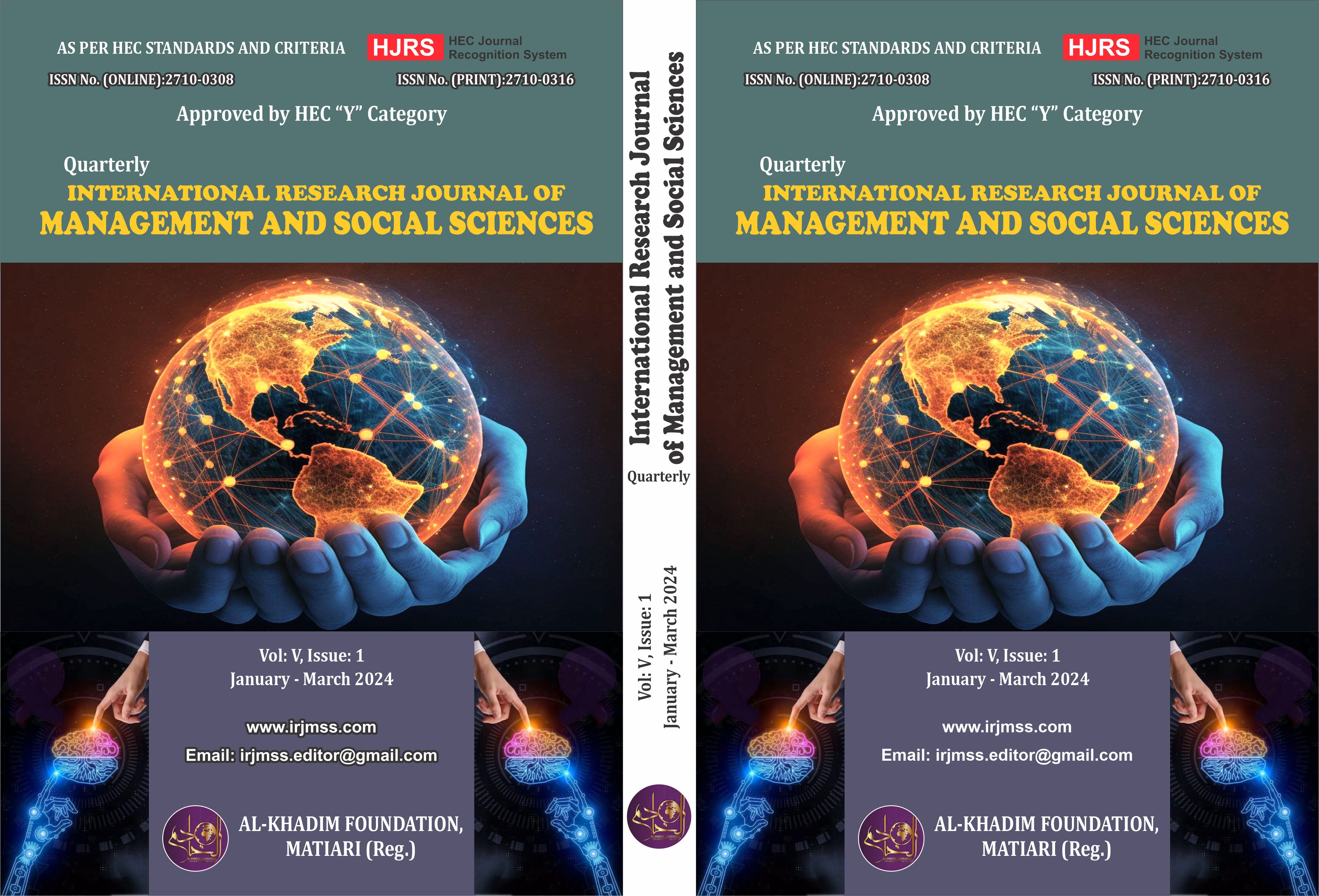Exploring the Role of Psychological Factors in Learning English as a Second Language: A Case Study of Ghazi University, Dera Ghazi Khan
Keywords:
Anxiety, ESL, EFL, Fear, Motivation, Psychological Factors, Second LanguageAbstract
The goal of this study is to investigate how psychological aspects of learning English as a second language are involved. In this study, there were 211 participants. A questionnaire was used by the researcher as a research technique in this study. Descriptive analysis, frequency, percentage, valid percentage, and cumulative percentage were used to analyse the data. Based on the collected data, it has been noted that pupils are more motivated to acquire the English language. They desire to become well-versed in the English language, but they lack motivation because of several psychological issues (linguistic phobia, attitude, motivation, and anxiety). Their goal is to improve their English language skills. The majority of students push themselves to speak English well when they lose motivation or get anxious about making mistakes in their second language. According to this viewpoint, instructors play a crucial final role in helping students avoid these psychologically demotivating circumstances by showing them how these aspects might positively impact their learning outcomes.
References
Bloom, B. S., Engelhart, M. D., Furst, E. J., Hill, W. H., & Krathwohl, D. R. (1956). Handbook I: cognitive domain. New York: David McKay.
Chesterfield, R., & Chesterfield, K. B. (1985). Natural order in children’s use of second language learning strategies. Applied Linguistics, 6(1), 45-59.
Cohen, D. (1998). Culture, social organization, and patterns of violence. Journal of personality and social psychology, 75(2), 408.
Daylight, R. (2017). Saussure and the model of communication. Semiotica, 2017(217), 173-194.
Ehrman, M., & Oxford, R. (1989). Effects of sex differences, career choice, and psychological type on adult language learning strategies. The modern language journal, 73(1), 1-13.
Ellis, R. D. (2000). Integrating the physiological and phenomenological dimensions of affect and motivation. In The Caldron of Consciousness (pp. 3-26). John Benjamins.
Graddol, D. (1997). Global English, global culture?. In Redesigning english (pp. 193-246). Routledge.
Hobsbawm, E. (1996). Identity politics and the left. new left review, 38-47.
Jakobson, R. (1987). Language in literature. Harvard University Press.
Lessard-Clouston, M. (1997). Language learning strategies: An overview for L2 teachers. The internet TESL journal, 3(12), 69-80.
Martos, I. M. (2020). Linguistic change and social transformation. Address in Portuguese and Spanish, 443.
O'MALLEY, J. M., Chamot, A. U., Stewner‐Manzanares, G. L. O. R. I. A., Russo, R. P., & Küpper, L. (1985). Learning strategy applications with students of English as a second language. TESOL quarterly, 19(3), 557-584.
Palmer, J. D. (1988). LINGUISTICS AND LITERACY: A NEW UNDERSTANDING. McGill Journal of Education/Revue des sciences de l'éducation de McGill, 23(001).
Pennycook, A. (1994). Incommensurable discourses?. Applied linguistics, 15(2), 115-138.
Sapir, E. (1921). An introduction to the study of speech. Language, 1, 15.
Schmitt, N., & Celce-Murcia, M. (2019). An overview of applied linguistics. An introduction to applied linguistics, 1-16.
Sidiropoulou, M. (2004). Linguistic identities through translation (Vol. 23). Rodopi.
Walker, J. B. (2013). Comparative tense and aspect in the Mara Bantu languages: Towards a linguistic history (Doctoral dissertation, Trinity Western University).
White, L. (2020). Linguistic theory, universal grammar, and second language acquisition. In Theories in second language acquisition (pp. 19-39). Routledge.
Wong, J. (2002). Applying conversation analysis in applied linguistics: Evaluating dialogue in English as a second language textbooks.
Zikai, G. (2019). A Translation Study on Drug Instructions from the Perspective of the Skopos Theory.






